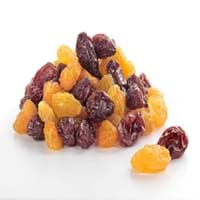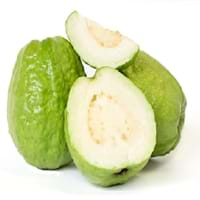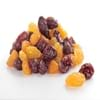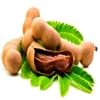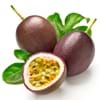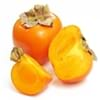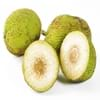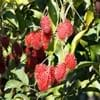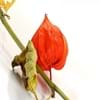Health Benefits
Acidity treatment, Cancer prevention, Good for diabetics, Prevents constipation, Prevents Anaemia
Cancer prevention, Diarrhea treatment, Prevents constipation, Scurvy treatment, Treatment of dysentary
General Benefits
Boosts immune system, Cures fever, Eye care, Fights against infections, Strengthens bones
Controls blood pressure, Cures cough, Improves eye vision, Maintains healthy cholesterol level, Treatment of common cold
Skin Benefits
Anti-aging benefits, Reduces wrinkles, Skin rejuvenation
Anti-aging benefits, Brightens and lightens complexion, Hydrates skin, Treatment of skin diseases
Hair Benefits
Protects hair
Prevents hair loss
Allergy Symptoms
Anaphylaxis, Asthma, Breathing difficulty, Coughing, Drop in blood pressure, Hives, Skin rash, Stuffy nose, Swelling of mouth, tongue or lips, Wheezing
Breathing difficulty, Coughing, Runny nose, Sneezing, Swelling of mouth, tongue or lips, Wheezing
Side Effects
Allergic reaction
Hair thinning, Nail thinning, Skin problems, Tooth decay, Weakness, Possibly unsafe during pregnancy
Lactating Women
Not Available
Yes
Best Time to Eat
Any time except an hour after meal
As a snack in the late afternoon, Don't consume at night and before bed, Eat the fresh ones, avoid mixing with any other foods, don't eat after meal., Morning time (before lunch)
Vitamin B5 (Pantothenic Acid)
Vitamin C (Ascorbic Acid)
Vitamin K (Phyllochinone)
Calories in Fresh Fruit with Peel
Calories in Fresh Fruit without Peel
Not Available
Not Available
Calories in Frozen Form
Not Available
Not Available
Calories in Dried Form
Not Available
Calories in Canned Form
Not Available
Type
Berry
Tree fruit, Tropical
Season
All seasons
All seasons
Varieties
Dark raisins, White or golden raisins, Sultanas and Currants
Lucknow 49, Allahabad Safeda, Chittidar, Harijha, Apple guava, Hafshi, Arka Mridula and Allahabad Surkha
Seedless Variety
Not Available
No
Color
Black, Blue, Green, Purple, Yellow
Green, Pink, Yellow
Origin
Central Europe, Western Asia
Central America, Mexico, South America
Grows on
Not Available
Trees
Soil Type
Clay loam, Sandy loam
Loam, Rocky, Sandy
Climatic Conditions
Warm
Sunny
Facts about
- 30th April is known as National Raisin Day.
- Fresno, California is known as raisin capital of the world.
- Half of world's raisin supply is produced in California.
- The black pigment in Guava leaves is used for textile applications.
- Guava leaves are used to make tea.
- Oils extracted from guava seeds are used in various cosmetics.
- Guava wood is used for decorative purposes.
Top Producer
United States of America
India
Other Countries
Afghanistan, Argentina, Australia, Chile, China, Iran, South Africa, Turkey, Uzbekistan
China, Indonesia, Mexico, Nigeria, Pakistan, Philippines, Thailand
Top Importer
Europe
Canada
Top Exporter
Turkey
India
Botanical Name
Vitis Vinifera
Psidium guajava
Synonym
Not Available
Not Available
Subkingdom
Tracheobionta
Tracheobionta
Division
Magnoliophyta
Magnoliophyta
Class
Magnoliopsida
Magnoliopsida
Subclass
Not Available
Rosidae
Family
Vitaceae
Myrtaceae
Species
Vitis vinifera
Psidium guajava
Generic Group
Grape
Myrtle
Difference Between Raisin and Guava
We might think that Raisin and Guava are similar with respect to nutritional value and health benefits. But the nutrient content of both fruits is different. Raisin and Guava Facts such as their taste, shape, color, and size are also distinct. The difference between Raisin and Guava is explained here.
The amount of calories in 100 gm of fresh Raisin and Guava with peel is 299.00 kcal and 68.00 kcal and the amount of calories without peel is Not Available and Not Available respectively. Thus, Raisin and Guava belong to High Calorie Fruits and Low Calorie Fruits category.These fruits might or might not differ with respect to their scientific classification. The order of Raisin and Guava is Vitales and Myrtales respectively. Raisin belongs to Vitaceae family and Guava belongs to Myrtaceae family. Raisin belongs to Vitis genus of Vitis vinifera species and Guava belongs to Psidium genus of Psidium guajava species. Beings plants, both fruits belong to Plantae Kingdom.
